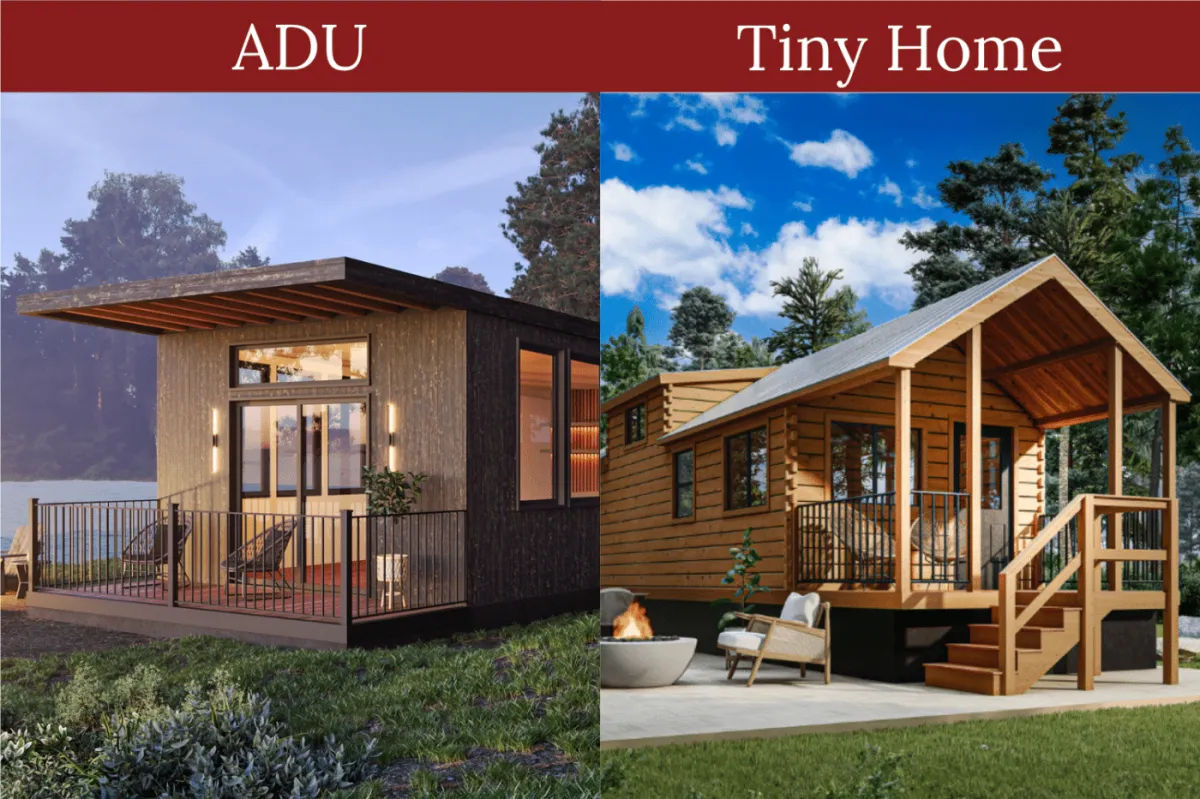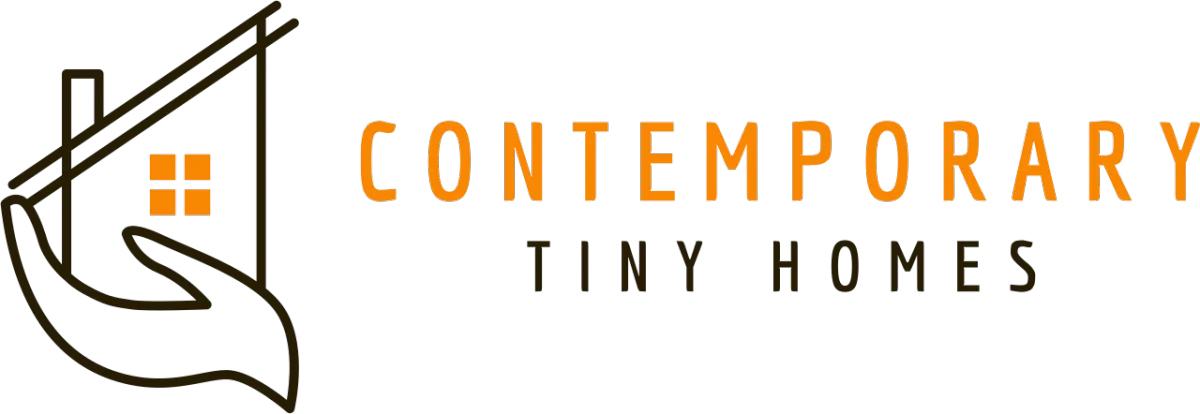Knowledge Center: Your Go-To Resource for ADUs and Tiny Living
Knowledge Center: Your Go-To Resource for ADUs and Tiny Living
Email [email protected]
Phone 860-TINY-HOM (es)

What are the differences between tiny homes and ADUs?
Tiny homes and ADUs have gained significant attention in recent years as innovative housing solutions that offer alternatives to traditional homes. Understanding variations in design, construction and affordability is crucial for individuals who are exploring unconventional housing options.
Let's explore the key disparities between tiny homes and ADUs, providing insights to help you make an informed decision in choosing the right housing solution for your needs and preferences.
Introduction to Tiny Homes and ADUs
Defining Tiny Homes and ADUs
Tiny homes are stand-alone residences. ADUs, on the other hand, are secondary dwellings on a property that are smaller in size compared to the main house, ranging from detached in-law suites to converted garages.
Popularity and Trends
Tiny homes have garnered attention for their minimalist lifestyle appeal, while ADUs have become popular for accommodating multi-generational living, rental income opportunities, or personal work offices. Both options reflect the growing interest in sustainable, efficient living spaces.
Design and Construction Differences
When it comes to design and construction, tiny homes and ADUs exhibit variations in size, layout, materials used, and adherence to building codes.
Size and Layout Variations
Tiny homes prioritize compactness and mobility, often featuring innovative space-saving solutions. ADUs, while smaller than primary residences, offer more traditional layouts and room for customization to suit various needs.
Materials and Building Codes
Tiny homes may have more flexibility in materials and construction methods due to their portability, whereas ADUs are typically constructed with more traditional building materials and must meet local building codes and zoning regulations.
Legal and Zoning Variations
Navigating the legal landscape is crucial for both tiny homes and ADUs, as regulations vary widely from location to location.
Regulatory Framework for Tiny Homes
Tiny homes face unique challenges in terms of zoning and building codes, with some areas embracing them as permanent residences, while others restrict their use to temporary or recreational purposes.
Permitting Process for ADUs
ADUs are subject to local permitting processes that dictate their size, placement, and use. Understanding and complying with these regulations is essential for homeowners looking to add an ADU to their property.
Affordability and Financing Contrasts
Cost considerations play a significant role in deciding between a tiny home and an ADU, from initial construction expenses to long-term financial implications.
Cost Comparison of Tiny Homes and ADUs
While tiny homes can offer a more affordable housing option upfront, ADUs may provide a higher return on investment over time due to their potential rental income or increased property value.
Financing Options Available
Financing a tiny home may differ from securing a loan for an ADU, as lenders evaluate factors such as permanency, location, and intended use. Exploring various financing options can help homeowners determine the most suitable path for their housing needs.
Environmental Sustainability Comparison
Are ADUs good for the environment?
ADUs are champions of energy efficiency, often utilizing innovative technologies and small spaces to minimize energy consumption and carbon footprint. They prove that good things do come in small packages.
Green Building Practices in ADUs
ADUs are no strangers to sustainability either. Many ADU designs incorporate eco-friendly materials and construction practices. They offer a green alternative for expanding living spaces without compromising environmental responsibility.
Community and Neighborhood Considerations
Social Impact of Tiny Homes
Tiny homes spark conversations and challenge traditional notions of housing. They promote minimalist living and can foster a sense of community among like-minded individuals who value experiences over possessions.
Integration of ADUs in Urban Planning
ADUs play a crucial role in urban planning by increasing housing density without significantly altering the urban landscape. Their seamless integration into existing neighborhoods helps address housing shortages while maintaining the charm and character of communities.
Tiny Homes and ADUs
The differences between tiny homes and ADUs offer a spectrum of choices for individuals seeking affordable, sustainable, and flexible living arrangements. Whether you prioritize mobility, environmental impact, or community integration, each option presents unique advantages and considerations. By weighing these factors and aligning them with your lifestyle and goals, you can confidently select the housing solution that best fits your needs.
Embark on your new chapter and let Contemporary Tiny Homes build your dream ADU that resonates with your values and aspirations. Schedule an appointment with one of our ADU professional to get started on your journey.
FAQ
Are tiny homes considered ADUs?
No, tiny homes and ADUs are distinct housing concepts. ADUs are secondary dwellings units that are built on the same property as a primary residence, while tiny homes are self-contained, often portable dwellings that can be placed on various properties.
Which option is more cost-effective, a tiny home or an ADU?
The cost-effectiveness of a tiny home versus an ADU can vary depending on factors such as size, materials used, location, and permitting requirements. Generally, tiny homes may have lower upfront costs but could incur higher ongoing expenses, whereas ADUs may involve more significant initial investment but offer long-term value.
Can I legally live in a tiny home or ADU in any location?
Legal regulations regarding tiny homes and ADUs vary by jurisdiction. It is essential to research local zoning laws, building codes, and permitting requirements to ensure compliance before residing in a tiny home or ADU.
How do tiny homes and ADUs contribute to sustainable living?
Tiny homes and ADUs can promote sustainability through their compact size, energy-efficient design, use of eco-friendly materials, and potential for reduced environmental impact. By embracing these housing options, individuals can minimize their carbon footprint and support sustainable living practices.

Copyright 2025. All rights reserved. Norwalk, CT
Connecticut's New Home Construction Contractor License: #NHC.0017654
EPA Lead-Safe Certified NAT-F269966-1


